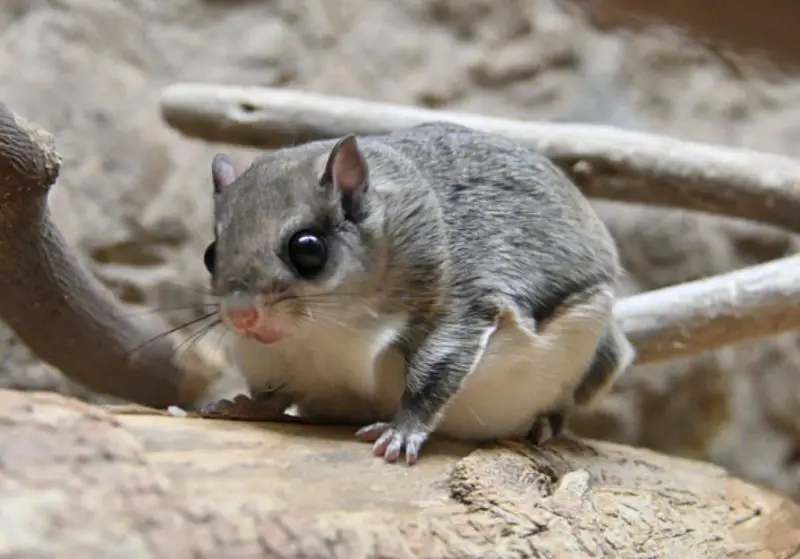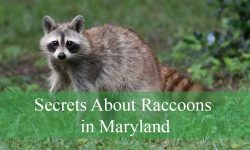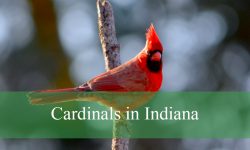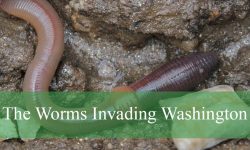If you’ve ever walked through a quiet Georgia forest at night, you might have felt that soft whisper of movement high above your head—something quick, silent, and almost invisible gliding between the trees. Chances are, you just witnessed one of the state’s most mysterious and delightful creatures: the flying squirrel.
Though rarely seen, flying squirrels are among Georgia’s most fascinating nocturnal mammals. Their big black eyes, silky fur, and ability to glide effortlessly from tree to tree make them seem almost otherworldly. But behind their cute appearance lies a world of secrets—of intelligence, social complexity, and adaptability.
In this article, we’ll uncover secrets about flying squirrels in Georgia that will surprise you—including their unique flight mechanism, habitats, diet, behaviors, and how they’re thriving in both rural forests and suburban neighborhoods across the state.
The Flying Squirrels of Georgia

Two Species, One State
Georgia is home to two species of flying squirrels:
- The Southern Flying Squirrel (Glaucomys volans) – Common throughout most of the state, including the Piedmont and coastal plains.
- The Northern Flying Squirrel (Glaucomys sabrinus coloratus) – Rare and found only in the higher elevations of the Appalachian Mountains in northern Georgia.
The Southern species is small, abundant, and frequently found in backyards, while the Northern variety is a conservation concern due to its limited range and specific habitat needs.
How They “Fly” Without Wings
Despite their name, flying squirrels don’t truly fly—they glide. A special membrane of skin called the patagium stretches between their front and back legs, forming a parachute-like surface. By launching from a high point, they can glide as far as 150 feet in a single leap, steering with their tail like a rudder.
This incredible adaptation allows them to move efficiently through dense forests, escape predators, and locate food without ever touching the ground.
Where Flying Squirrels Thrive in Georgia
Forest Homes
Flying squirrels love Georgia’s hardwood and mixed forests, where oak, hickory, and beech trees dominate. These trees provide both shelter and their favorite foods—acorns, nuts, and seeds.
In rural regions, they occupy old woodpecker holes, hollow trees, and nest boxes. In cities and suburbs like Atlanta, Athens, and Macon, they have adapted by nesting in attics, sheds, and birdhouses, often unnoticed.
The Northern Flying Squirrel’s Special Habitat
The rare Northern Flying Squirrel inhabits the cool spruce-fir forests of North Georgia’s Appalachian Mountains. These forests, found in places like the Chattahoochee National Forest, provide the fungi, lichens, and mossy conditions these squirrels depend on.
Because of habitat loss and climate change, the Northern species is considered threatened in Georgia and protected by state law.
Secrets of Their Nightlife
Nocturnal and Silent
Flying squirrels are strictly nocturnal. Their huge dark eyes are specially adapted for night vision, while their whiskers and acute hearing help them navigate in total darkness.
Unlike gray squirrels that chatter during the day, flying squirrels communicate with high-pitched ultrasonic calls that are inaudible to humans. These sounds help them stay in contact during night glides or alert others to danger.
Highly Social Creatures
One of the biggest surprises about flying squirrels is their social nature. Unlike most solitary squirrels, flying squirrels often live together in communal nests, especially in winter. Up to 20 individuals may share a single tree cavity to stay warm.
These social bonds are rare among rodents and demonstrate advanced cooperation, intelligence, and memory.
Winter Behavior
Flying squirrels don’t hibernate. Instead, they remain active through Georgia’s mild winters, venturing out on calm nights to find food. During cold snaps, they conserve energy by huddling together in groups—a behavior known as social thermoregulation.
Diet and Feeding Habits
What They Eat
Flying squirrels have an impressively varied diet that changes with the seasons. In Georgia, they eat:
- Acorns, hickory nuts, and beech mast
- Seeds, fruits, and berries
- Tree sap and fungi
- Insects, bird eggs, and small nestlings
Their omnivorous diet allows them to adapt to seasonal changes and thrive in diverse environments.
Stashing for Survival
Flying squirrels are expert hoarders. In autumn, they collect nuts and seeds, storing them in tree crevices, bark pockets, or underground caches. This behavior ensures they have enough food through winter when resources are scarce.
Scientists have found that flying squirrels even plant trees inadvertently by forgetting some of their stored seeds—making them vital to Georgia’s forest regeneration.
Reproduction and Family Life
Courtship and Mating
Mating occurs twice a year in Georgia: once in late winter (January–February) and again in mid-summer (June–July). Males pursue females with high-speed chases through the treetops, displaying agility and endurance.
After mating, the female takes full responsibility for raising the young. She builds a cozy nest lined with leaves, feathers, and moss in a tree cavity or birdhouse.
Raising the Young
A female typically gives birth to 2–6 young after a 40-day gestation period. Newborns are blind, hairless, and completely dependent on their mother.
At around 5 weeks, they begin gliding short distances under supervision, and by 10 weeks, they’re fully independent. Mothers are exceptionally attentive, relocating their young if the nest is disturbed or threatened.
Family Bonds
Even after they mature, juveniles often stay close to their family group for several months. This social structure improves survival, especially during harsh conditions.
Flying Squirrels vs. Other Squirrels
Characteristic |
Flying Squirrel |
Gray Squirrel |
Fox Squirrel |
|---|---|---|---|
Activity |
Nocturnal |
Diurnal |
Diurnal |
Movement |
Gliding |
Climbing, leaping |
Climbing |
Social Behavior |
Highly social |
Solitary |
Solitary |
Size |
8–10 inches |
15–20 inches |
18–24 inches |
Common Habitat |
Forests, attics |
Parks, suburbs |
Open woodlands |
While gray and fox squirrels dominate Georgia’s daytime canopy, flying squirrels rule the night sky—silent, swift, and unseen.
The Science of Their Glide
Perfect Aerodynamics
When a flying squirrel launches from a branch, it spreads its limbs to extend the patagium. Air flows beneath the membrane, generating lift. By adjusting the tension in their limbs and tail position, they control direction, speed, and landing precision.
A cartilage spur on each wrist, called a styliform cartilage, extends the glide surface even farther, allowing for maximum control.
Precision Landings
Their landing technique is equally impressive. Just before impact, they lift their body upward, braking their glide, and land softly, gripping the bark with sharp claws.
Silent Movement
Flying squirrels are almost completely silent in flight. Their soft fur and light weight allow them to move through the air without making a sound—an invaluable trait for avoiding predators like owls, snakes, and raccoons.
Predators and Threats
Natural Predators
In Georgia, flying squirrels must evade:
- Owls, especially the barred and great horned owl
- Snakes that raid tree nests
- Raccoons and weasels that prey on young
- Cats in suburban areas
Their gliding ability and nocturnal habits provide effective defense, but habitat loss remains their biggest threat.
Human Threats
Urban development, deforestation, and climate change have reduced the availability of mature trees with cavities. Pesticides also reduce insect prey and contaminate food sources.
Conservation programs now encourage nest box installation and protection of old-growth trees to help maintain flying squirrel populations statewide.
Amazing and Little-Known Facts About Georgia’s Flying Squirrels
- They can glide over 150 feet in one leap.
- Their eyes glow bright red or orange under flashlight beams at night.
- Flying squirrels use ultraviolet signals on their fur, visible under UV light—a discovery that shocked scientists in 2019.
- They never actually “fly”, but can change glide direction mid-air up to 180 degrees.
- They are pollinators, spreading spores of fungi that help trees absorb nutrients.
- They groom each other socially, strengthening group bonds.
- Their glides are nearly silent, making them invisible to predators.
- Southern flying squirrels can live 5–6 years in the wild, longer in captivity.
The Importance of Flying Squirrels in Georgia’s Ecosystem
Forest Regenerators
By burying seeds and nuts, flying squirrels unintentionally plant new trees, aiding in forest regeneration. Their caching habits help oak, hickory, and beech trees spread across Georgia’s woodlands.
Fungal Dispersers
They also play a critical role in spreading mycorrhizal fungi, which form symbiotic relationships with tree roots. These fungi improve soil health and tree growth, making flying squirrels vital to forest sustainability.
Indicators of Forest Health
Because they depend on mature forests with cavities, flying squirrels are considered indicator species—their presence signals a healthy, well-balanced ecosystem.
Living Alongside Flying Squirrels
Spotting Them
Though rarely seen, you can detect their presence by:
- Listening for soft “chirping” sounds at night.
- Looking for gliding shadows between trees under moonlight.
- Installing nest boxes in wooded backyards.
Preventing Nuisance Problems
If flying squirrels enter your attic, seal entry points carefully after ensuring all animals have left. Relocation should only be done by licensed wildlife professionals in Georgia, as improper handling can harm the animals.
Helping Conservation Efforts
You can support flying squirrels by:
- Planting native trees like oaks, hickories, and maples.
- Avoiding tree removal during nesting season.
- Participating in local wildlife monitoring programs.
Myths and Misconceptions
Myth |
Truth |
Flying squirrels are rare. |
Southern species are common across Georgia; Northern ones are rare. |
They can fly like bats or birds. |
They glide using skin flaps, not true flight. |
They hibernate in winter. |
They remain active year-round. |
They are pests. |
They’re beneficial seed dispersers and forest pollinators. |
They live only in wilderness. |
Many thrive in suburban backyards. |
FAQs About Flying Squirrels in Georgia
Are flying squirrels common in Georgia?
Yes. The Southern Flying Squirrel is widespread across the state, especially in wooded areas.
Are they harmful to homes?
Not usually. They may enter attics for warmth but cause minimal damage compared to other rodents.
Do they really glow under UV light?
Yes. Their fur fluoresces pink under ultraviolet light—a mystery scientists are still studying.
What do they eat most?
Acorns, nuts, insects, and fungi form the bulk of their diet.
Are flying squirrels protected in Georgia?
The Southern species is not protected, but the Northern Flying Squirrel is state-listed as threatened.
Conclusion
The flying squirrels of Georgia are tiny acrobats of the night—brilliantly adapted, intelligent, and crucial to forest ecosystems. They glide silently under the cover of darkness, spreading seeds, nurturing trees, and maintaining the delicate balance of Georgia’s woodlands.
These remarkable mammals remind us that nature’s most magical creatures often go unseen. The next time you walk beneath Georgia’s moonlit pines, look up—you just might catch a glimpse of a gliding silhouette, a soft chirp, or a flick of a tail disappearing into the night.
That’s the real secret of Georgia’s flying squirrels—they’re not just survivors; they’re the silent caretakers of the forest canopy.






